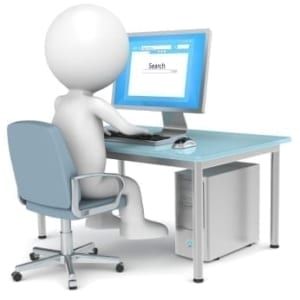Images are an important component of a good Austin website design. While content is king in the  internet world, it is images that give meaning to the words. Studies have shown that readers are able to more effectively relate to content if there is an accompanying visual illustration. Because an image is a crucial part of a website, it is important that it be used effectively. Images can indeed be worth a thousand words.
internet world, it is images that give meaning to the words. Studies have shown that readers are able to more effectively relate to content if there is an accompanying visual illustration. Because an image is a crucial part of a website, it is important that it be used effectively. Images can indeed be worth a thousand words.
Mistakes to Avoid
Following are some of the common mistakes to avoid when selecting images to complement an internet presence.
- File Size – A common mistake that is made is to use a photo with a file size that is too large which leads to a slow loading speed. Most web visitors do not want to wait for a slow site to load and will click off and go on to the next option on the search engine results pages listing.
- Cropping – Viewing dimensions are important as visitors want to actually see the image; so it cannot be too small to be viewable or too large to fit on the screen. Cropping the image to suit the web page is the best thing to do.
- Irrelevance – Photos are a great addition to a web page; however; it is important that they be relevant to the site or relate to the article they accompany. Using an unrelated image just for the sake of having one is a waste of time and may confuse readers.
- Bad Editing – When using an Austin website design that includes edited photos, be sure that the quality is worth viewing. Never post one that is obviously edited or even worse, poorly edited as that can affect the credibility of the site and the information that is provided.
Effective Utilization
Following are some of the ways that an image can be used effectively on a website.
- Complementary – An effective photo by itself should be able to tell viewers what it is about. When used alongside an article, it can give readers a thorough perspective of the topic.
- File Size – If an image is merely for monitor viewing, then the file size should be at least 250 kilobytes. This will ensure that visitors with a slow internet connection will be able to see it without any delays. Resolution wise it should be no more than 640 x 480 pixels to fit well on most displays.
- Format – There are three types of image formats for website use: jpeg, gif and Png. Png’s can produce a high quality display and overlay; however, its downside is its poor compressibility. Gif’s have good compressibility and are ideal for photos with little color. Jpeg which is the most popular has the most compressibility; however, too much compression can greatly reduce quality.
- Aesthetics – When choosing an image, consider its aesthetic value. Balance the brightness and the contrast in order to effectively emphasize the subject. Crop out parts that are unnecessary and use effects sparingly so as to not be a distraction but rather highlight and enhance the subject.
- Layout – Carefully plan the position of an image by using a layout as random placement can distract viewers. Limit photos designed to direct readers to one per page; the rest should be positioned near relevant content so viewers can easily understand the relationship between the images and content.
In summary, images are a vital web page element often used in Austin website design that can help readers by showing visual illustrations of accompanying content. To be effective, images should be carefully selected, processed and properly arranged so they can serve their intended purpose well!
Call Web Unlimited For Austin Website Design Advice!
Do you plan on using images in your Austin website design? Call the specialists at Web Unlimited at (888) 516-0172 – who can help with photos and many other aspects necessary for an internet presence!
